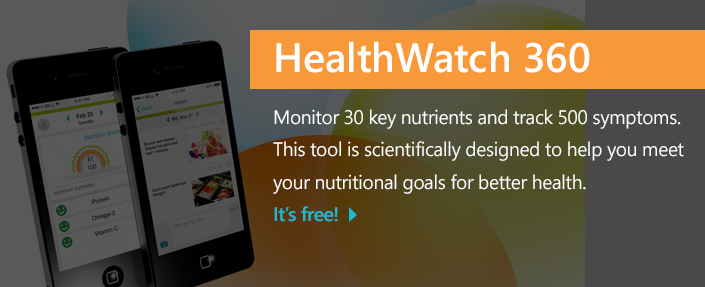Can Vitamin C Cause Hemochromatosis
Iron overload
Foods rich in Vitamin C such as citrus and kiwi are generally good for your health. For most of us, high intake of vitamin C is not a problem because excess vitamin C is excreted through the urine. But for about one in every 200 Caucasians from northern Europe, too much vitamin C can lead to a health condition called iron overload.

What is iron overload?
Iron overload, also known as hemochromatosis, refers to the condition in which you have too much iron in your blood. Iron is an essential mineral for the human body. Iron deficiency can cause anemia. But too much iron can be toxic. Buildup of iron in the body can cause damage to the liver, heart, and pancreas.
Signs and symptoms of iron overload rarely occur in men until they're 40-60 years old, and in women until after menopause. Early signs may include fatigue, joint pain, abdominal pain, and loss of sex drive. Later symptoms may include arthritis, liver disease, diabetes, heart abnormalities, and skin discoloration.
What causes iron overload?
Iron overload is predisposed by genetic mutations. In fact, it is one of the most common hereditary diseases in Caucasians, especially those of Northern European descent, with a prevalence as high as one in every 200 people. In this population, the majority of iron overload is due to mutations in the HFE gene (1-3).
The HFE gene regulates the production of a protein called hepcidin, the master regulatory hormone for iron homeostasis. Hepcidin determines how much iron is absorbed from the diet and how much is released from storage sites in the body.
More than 20 mutations in the HFE gene that cause iron overload have been identified. Two in particular, the C282Y and H63D mutations, are responsible for most cases of iron overload disease (Figure 1).
Figure 1. Allele frequencies for HFE mutations (a) C282Y and (b) H63D in Europe (from Ref. 4).
The C282Y mutation (rs1800562) replaces the amino acid cysteine with the amino acid tyrosine. This replacement prevents the altered HFE protein from folding properly, making it unable to reach the cell surface and interact with transferrin receptor protein to produce hepcidin. As a result, iron regulation is disrupted and too much iron is absorbed from the diet, leading to iron overload. In northern Europe, one in eight people carry this mutation. Heterozygotes (those who carry one copy of the mutation and one copy of the normal gene) do not have the risk for iron overload. But the homozygotes (those who carry two copies of the mutation) do.
The H63D mutation (rs1799945) replaces the amino acid histidine with the amino acid aspartic acid. This replacement impairs the affinity of HFE protein to the transferrin receptor. Although this mutation is more common throughout Europe (carried by about 25% of the population), it only causes iron overload if present with the C282Y mutation, a combination known as a compound heterozygote. The homozygous H63D mutation genotype is typically normal in iron homeostasis.
These two HFE mutations are less common in descendants of Africans and Asians. This explains why iron overload disease is rare in these populations (5).
Is iron overload preventable?
Not everyone who carries the risk genotypes develop iron overload. Among the 2.2% of Caucasians who are C282Y homozygous or C282Y/H63D compound heterozygous (Hanson et al., 2001), only a quarter develop the disease. This means the risk genotypes predispose the disease, but not enough to cause it. Two nutrients – iron and vitamin C – also contribute to the development of the disease.
For risk genotype carriers, long-term intake of iron-rich foods and too much vitamin C can trigger iron overload. As mentioned in the vitamin C overview, vitamin C enhances iron absorption and keeps iron in its active form. Therefore, one can prevent iron overload by keeping dietary intake of iron and vitamin C within recommendations. Since iron deficiency or vitamin C deficiency will cause other disorders, we recommend that concerned readers monitor their iron and vitamin C intake using our free diet and nutrition evaluator.
Why is iron overload more prevalent in Caucasians?
One theory suggests that the prevalence of the C282Y mutation in Caucasians might be the result of dietary transition from a hunter-gatherer diet rich in iron (red meat) to an iron-reduced cereal/grain diet during the Neolithic period in Europe. This mutation increased iron storage and protected carriers from anemia caused by iron deficiency. The lower incidence of this mutation in other agrarian regions may be due to higher dietary intake of vitamin C (6). The prevalence of the C282Y mutation in combination with abundant dietary iron, along with vitamin C fortified foods and the practice of vitamin C supplementation, has led to increased incidence of iron overload in Caucasians.

References
1. Crownover BK, Covey CJ. 2013. Hereditary hemochromatosis. Am Fam Physician. Feb 1;87(3):183-90. PMID:23418762
2. Piperno A. 2013. Molecular diagnosis of hemochromatosis. Expert Opin Med Diagn. 7(2):161-77. doi: 10.1517/17530059.2013.763794. PMID:23530886
3. Hanson EH, Imperatore G, Burke W. 2001. HFE gene and hereditary hemochromatosis: a HuGE review. Human Genome Epidemiology. Am J Epidemiol. 154(3):193-206. PMID:11479183
4. Distante S, Robson KJ, Graham-Campbell J, Arnaiz-Villena A, Brissot P, Worwood M. 2004. The origin and spread of the HFE-C282Y haemochromatosis mutation. Hum Genet. 115(4):269-79. PMID:15290237
5. McDonald CJ, Wallace DF, Crawford DH, Subramaniam VN. 2013. Iron storage disease in Asia-Pacific populations: the importance of non-HFE mutations. J Gastroenterol Hepatol. 28(7):1087-94. doi: 10.1111/jgh.12222. PMID:23577916
6. Naugler C. 2008. Hemochromatosis: a Neolithic adaptation to cereal grain diets. Med Hypotheses. 70(3):691-2. PMID:17689879
Can Vitamin C Cause Hemochromatosis
Source: https://www.gbhealthwatch.com/Trait-Iron-overload.php

0 komentar:
Posting Komentar